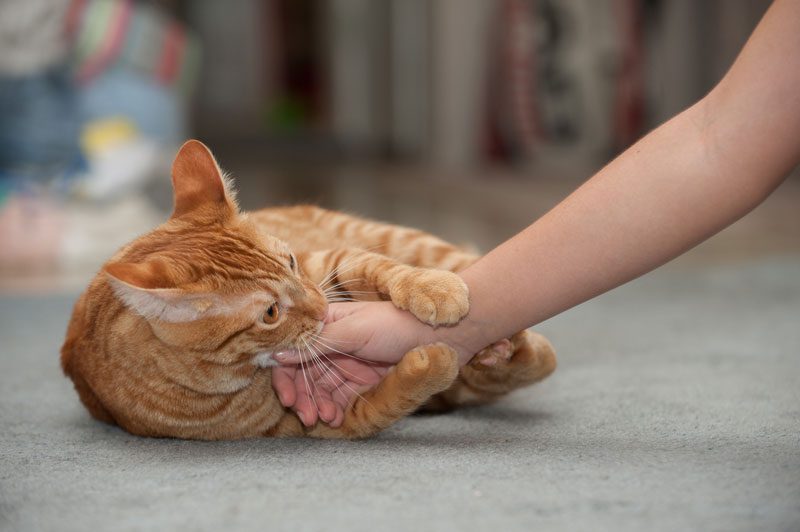Are you tired of scratches and bites from your furry feline friend? Do you dream of a harmonious household where your cat plays nice with others? Well, look no further! In this article, we will explore the fascinating world of training cats to have queenly manners. By understanding and implementing these techniques, you can create a peaceful environment for both you and your beloved pet. Did you know that 80% of cat owners struggle with their cats' behavior? But fear not, because with a little knowledge and patience, you can transform your mischievous kitty into a well-mannered queen. So let's dive in and discover the secrets to turning your cat into the epitome of grace and charm!
Key Takeaways:
- Cats can be trained to exhibit polite behavior through positive reinforcement.
- Consistency and patience are key when training cats to have good manners.
- Redirecting unwanted behavior and rewarding desired behavior helps in shaping a well-behaved cat.
- Understanding a cat's body language and cues can aid in preventing aggressive or inappropriate play.
- Training cats to play nice not only benefits their owners but also improves their overall well-being and social interactions.
The Purpose of Queenly Manners: Training Cats to Be Polite
Why is it important to teach cats good manners?
Teaching cats good manners is essential for both owners and the cats themselves. When a cat has good manners, it makes living with them much more enjoyable. They are less likely to scratch furniture, jump on countertops, or exhibit other unwanted behaviors. This creates a harmonious environment in the home.
For cats, learning good manners can also be beneficial. It helps them understand boundaries and expectations, making them feel more secure and confident. Cats with good manners are more likely to receive positive attention from their owners and have a stronger bond with them.
Benefits of Teaching Cats Good Manners for Owners and Cats Themselves
How does teaching cats good manners benefit owners?
Teaching cats good manners benefits owners in various ways. Firstly, it reduces stress and frustration caused by destructive or disruptive cat behavior. By having well-behaved cats, owners can relax and enjoy their time at home without constantly worrying about their belongings being damaged.
In addition, teaching cats good manners enhances the bond between owners and their feline companions. When a cat displays polite behavior such as using the litter box consistently or not scratching furniture, it fosters a sense of trust and respect between the owner and the cat.
Simple Tips for Teaching Cats Proper Behavior and Etiquette
What are some simple tips for teaching cats proper behavior?
- Create a consistent routine: Cats thrive on routines, so establish regular feeding times, play sessions, and litter box cleanings to help them understand what is expected of them.
- Use positive reinforcement: Reward your cat with treats, praise, or playtime when they display good manners. This encourages them to repeat the desired behavior.
- Provide appropriate outlets for natural behaviors: Cats have natural instincts to scratch and climb. Offer scratching posts and vertical spaces to redirect these behaviors away from furniture.
The Importance of Rewarding Cats for Displaying Good Manners
Why is it important to reward cats for good manners?
Rewarding cats for displaying good manners is crucial because it reinforces positive behavior. When a cat receives a reward, such as a treat or praise, after exhibiting polite behavior like using the litter box or not scratching furniture, they associate that behavior with something positive. This increases the likelihood of them repeating the same behavior in the future.
Rewards also serve as motivation for cats to continue practicing good manners. They learn that by behaving appropriately, they can earn rewards and receive attention from their owners, which reinforces their bond.
How Consistency in Training Helps Reinforce Positive Cat Behaviors
Why is consistency important in training cats?
Consistency is vital in training cats because it helps reinforce positive behaviors and prevents confusion. When a cat receives consistent messages about what is expected of them, they are more likely to understand and comply with those expectations.
If an owner inconsistently enforces rules or allows certain behaviors at times but not others, it can confuse the cat and make training less effective. By consistently reinforcing desired behaviors and addressing unwanted ones, cats learn what is acceptable and what is not.
Techniques and Tools to Help Teach Cats Good Manners
What are some techniques and tools that can assist in teaching cats good manners?
There are several techniques and tools that can aid in teaching cats good manners:
- Clicker training: Clicker training involves using a small device that makes a clicking sound to mark desired behaviors. This helps cats understand which actions earn rewards.
- Positive reinforcement: Rewarding cats with treats, praise, or playtime when they display good manners encourages them to repeat those behaviors.
- Deterrents: Using deterrents such as double-sided tape on furniture or citrus-scented sprays can discourage cats from engaging in unwanted behaviors like scratching or jumping on countertops.
Examples of Common Cat Behaviors Requiring Queenly Manners Training
What are some common cat behaviors that may require Queenly Manners training?
Queenly Manners training can address various cat behaviors, including:
- Scratching furniture: Cats have a natural instinct to scratch, but it can be destructive when directed towards furniture. Teaching them to use appropriate scratching posts is essential.
- Litter box issues: Some cats may have difficulties using the litter box consistently. Training can help them understand the proper location and behavior associated with using the litter box.
- Jumping on countertops: Cats exploring kitchen countertops can be unsanitary and disruptive. Training them to stay off countertops helps maintain cleanliness and prevents potential accidents.
With these tips and techniques, you'll be well on your way to teaching your cat proper behavior and etiquette. Remember, patience and consistency are key in shaping your feline friend into a polite companion!
In conclusion, training cats to have queenly manners and play nice is possible with patience and consistency. By using positive reinforcement techniques and setting clear boundaries, seventh graders can successfully teach their feline friends to behave politely and enjoy playtime together.
How do you teach an adult cat to play gently?
If your cat becomes too rough during playtime, start by redirecting their attention to a different toy. Offer them something else to play with instead of your hand. If this strategy is successful, you can continue playing with them. However, if they continue to ignore your alternative and persist in biting or scratching, it's best to end the interaction and walk away.
Is it OK to spray cat with water?
Using a squirt bottle to spray cats is considered punishment, not reinforcement. The most effective way to encourage positive behavior in cats is to provide them with options to express their needs and reward them when they choose the preferred behavior.
How do you play with a cat that doesn't like to play?
Since cats can be particular, it's important to get them toys that are both captivating and stimulating. Look for cat toys that resemble birds with feathers, make chirping sounds like a mouse, or resemble small bugs. Move the toys around quickly and then slowly to see which style your cat enjoys the most.
When cats play too rough?
To prevent cats from biting, you can redirect their energy by tossing a cat toy or using fishing pole lures. If play becomes too rough, give them a five-minute timeout in a separate room. By removing the source of their entertainment, they will learn to play nicely in order for the games to continue. It is important to avoid physical corrections, as they can make aggression worse.
How do you calm a misbehaving cat?
You can usually discourage a cat from engaging in these irritating behaviors by clapping your hands, speaking firmly, or using an air spray. However, it is not recommended to discipline your cat by hitting, scaring, grabbing it by the neck, or using other negative methods.
Can you train a cat to be gentle?
If your cat tends to play rough with your hands and feet, you can teach them to be more gentle by substituting a toy for your hands and feet. This will indicate that your hands are meant for petting, grooming, giving medication when needed, and showing affection or completing a task.

















